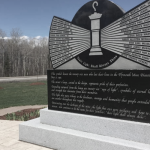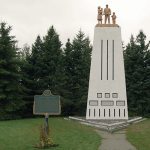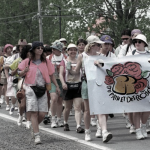Within ten days, about 2,500 workers in six hospitals and nine nursing homes were on wildcat strikes and hundreds of other health care workers joined work-to-rule and other worker solidarity efforts. Premier Ralph Klein could only watch in horror as his budget cuts backfired.
Alberta’s Conservative government eliminated tens of thousands of public sector jobs between 1993 and 1994 while cutting the wages and benefits of the workers who remained. The 1994 budget delivered a 20% cut in health care, a 21% cut in post secondary education and a 12.4% cut in K-12 education. Welfare rolls were cut in half over one year. Within two years, Alberta program spending declined by over 21%. Homelessness climbed 740% during the Klein years in office.
The labour movement, overwhelmed by the ferocity of the government’s attack on people to delivered essential services, was left struggling to respond. So, when the Klein-appointed Calgary Health Authority moved to further the province’s privatization agenda by contracting out the jobs of Calgary hospital laundry workers, it expected little resistance. They were wrong.
The workers had already taken a 28% cut in the previous round of bargaining in order to keep their jobs. They had given enough to “King Ralph” and were determined not to become pawns in the Conservative’s game plan to destroy the public sector.
The first to respond were 60 laundry workers at the Calgary General Hospital, members of the Canadian Union of Public Employees. When they learned that their jobs would be handed over to K-Bro Linens in Edmonton, they all called in sick. Workers at the Foothills Hospital where the laundry workers were members of the Alberta Union of Provincial Employees, followed suit the following day.
Within ten days, about 2,500 workers in six hospitals and nine nursing homes were on wildcat strikes and hundreds of other health care workers joined work-to-rule and other worker solidarity efforts. Trade unionists from outside the health sector as well as many members of the general public demonstrated solidarity with the strikers on their picket line and in public rallies.
Premier Klein watched in horror as his carefully orchestrated dismantling of public services in Alberta seemed to crumble. The Calgary Health Authority, under pressure from the government, offered the unions a delay in contracting out of 18 months, long enough for most of the affected workers to find other jobs. The “tough guy” government of Ralph Klein had blinked and it was a group of mainly immigrant women workers who had caused it to blink.
The courage displayed by the laundry workers inspired a wave of strikes and job actions by other health care workers; licensed practical nurses and general support service workers repeatedly took part in some of the largest walk outs in Alberta’s history during the closing years of that decade.
While the laundry workers’ victory was a partial one, the events that they set in motion marked a victory for all Alberta working people. The cuts and privatizations largely stopped for several years and the government began reinvesting in public services however modestly.
“I would just like to add to that, and that is that after the laundry workers’ strike the Klein government was a different animal than before the laundry workers’ strike. Before that, as Tom said, they were ideologically driven, they refused to discuss. There was no discussion of any of their policies, they were simply enacted. After that they became much more of a kind of populist government. Yes, they still had their ideological conditioning, but they looked before they leapt. They compromised, they backed off of things. If it looked like people were ready to make a fight out of things, they backed off. They did not come in and take people on directly that way again I don’t think, and I think that was a victory for the labour movement.”
Jim Selby interview.
– – – – – – – – – –
Source: Alberta Labour History Institute


